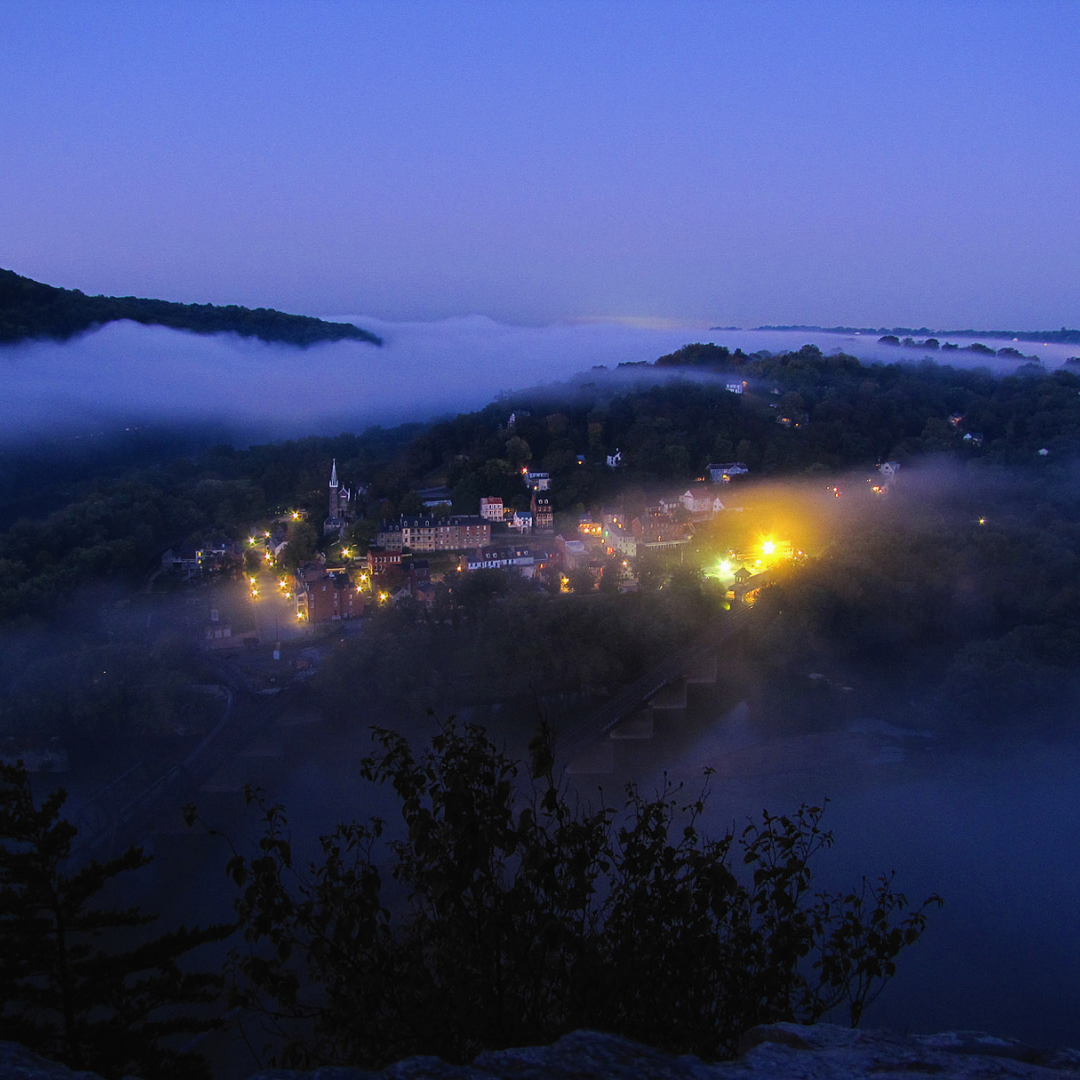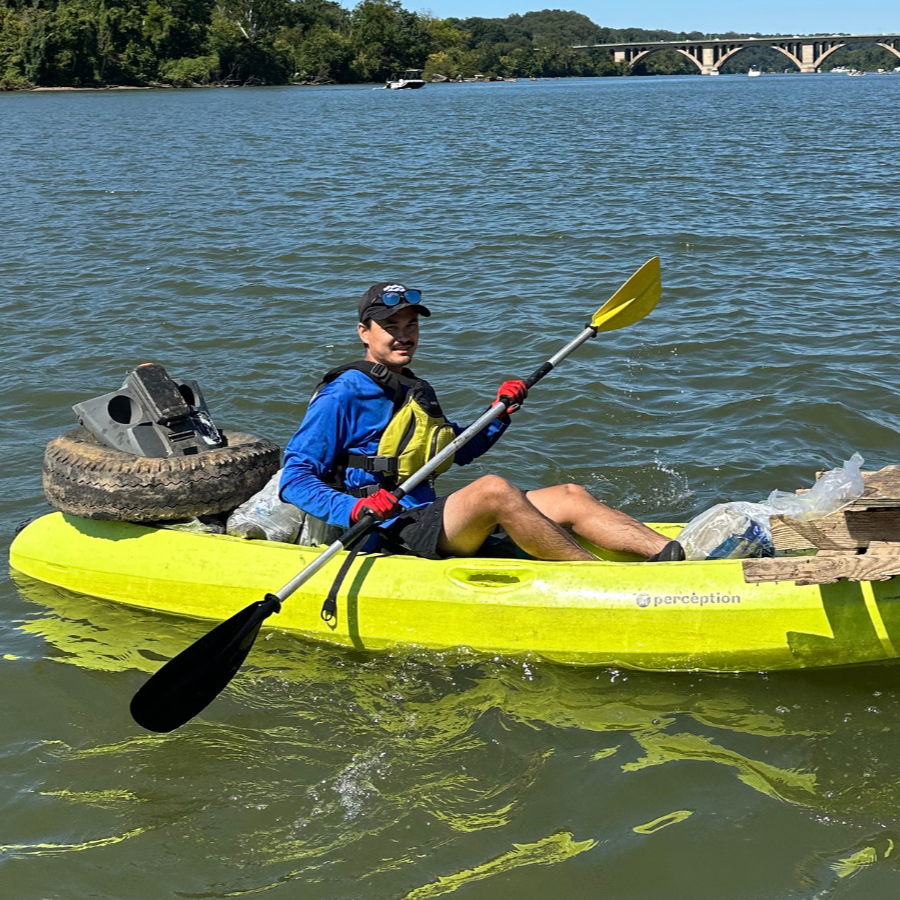Watch: The Potomac River fuels Olympic dreams
/This world-class rower found her speed on the Potomac, now she wants to keep it clean
Click to watch Emily’s story…Or read on! Photo courtesy of Matt Madigan
Emily Schmieg is out rowing on the Potomac River at 6 am. The dawn sky and bird song are her training partners six days a week. She is a local rowing phenomenon and a four-time US National Team Rower and World Silver Medalist. If you haven’t heard of her yet, you will.
Her sport is women’s lightweight single scull, a sliver of a boat that moves with grace and lightning-fast speed across the Potomac’s waters.
This summer was her most recent success at the World Rowing Championship. Now she is preparing for the 2020 Tokyo Summer Olympics, and the Potomac River is her training gym.
Finding peace, and speed, on the Potomac
It’s really peaceful out on the water as the sun comes up. Emily says, “it’s like getting a taste of it if nobody was around. You kind of own the place.”
photo courtesy of matt Madigan
“I went from being a desperate hopeful, to being a contender,” she says. “It was here, on the Potomac, that I finally found some speed.”
Emily Schmieg moved to the DC region in 2013. She had rowed the famed Charles River in Boston, and Seattle’s mountain-ringed Hood Canal on the edge of the Pacific. But it was the Potomac River that accelerated her rowing career.
The speed she found training on the Potomac River continued to build, and led to her first spot on the World Championship team in 2016. She continued training on the Potomac the following year, got faster, got a spot on the 2017 National Team, and got a bronze medal.
As her athletic career took off, her coach observed that she began improving her speed when she started training on the Potomac River.
There are so many things to keep track of on the Potomac River – other river traffic with kayaks, boats, paddleboarders. The wind pushes your boat. The tide pulls it. All these factors become background as you learn to gain speed regardless of the other influences on the water. Training on the Potomac has made Emily a stronger and more resilient rower.
Today, Emily rows with her coaches, Judith Vogel and Matt Madigan, and team members at Potomac Boat Club just north Key Bridge in Georgetown. They are hopeful that the river will now propel her to a spot on the 2020 Olympic Team.
Port-a-potty poses a serious risk
Unfortunately, training on the Potomac River has a serious downside. Polluted runoff and bacteria are ugly hazards in the water. Trash poses a particular risk to competitive rowers moving at top speed.
“We’ve hit anything from plastic bottles to glass bottles to cans,” notes Emily.
Last summer Emily’s oar hooked a submerged Port-a-Potty door just under the surface. The impact nearly knocked her out of her boat. She was equally disturbed by the recognition that there was a Port-a-Potty in the river, and by how close she came to what could have been a season-ending injury.
A sign warns of Sewage overflows near Emily’s Boathouse in Georgetown.
Trash on Theodore roosevelt island, along Emily’s training route.
Sometimes she and other rowers pick up trash they encounter in the water. As rowing team members, they are doing their part even during active training, with the coach’s boat carrying found trash back to the dock for disposal.
Heavy rains (which have reached record highs the past few summers) and increasingly intense storms due to climate change aren’t helping the situation. With the combined sewer overflow problem that’s plagued DC for years, a downpour can mean Emily and other rowers must forego rowing out on the water for days after a storm. Bacteria contamination from sewer overflows make the splashes of contaminated water a danger to human health.
This problem is being addressed by the DC Water’s Clean Rivers Project, and tunnels built to hold heavy storm water flow until our region’s state of the art Blue Plains water treatment plant can catch up are already stopping 89% of sewer overflow on the Anacostia River. A similar project will be started in Alexandria, Virginia, to address that city’s similar sewer overflow problem.
Hopes for the Potomac River’s future
What does Emily hope for the Potomac River’s future? She wants people to enjoy it.
“My hope for the Potomac River is to see it continue to be cleaned up. To know that if it rains, it won’t be a hazard. For people to respect that it’s not a dumping ground for scooters they don’t like. To see an increase in wildlife.”
“There is a lot of beautiful stuff along the river. It is a joy to get to take it in. You can just be one with what’s going on around you.”
photo courtesy of matt madigan
Want to support Emily’s dream of a pollution-free Potomac?
Make a gift to the river today to help us fund trash clean-ups and advocate for more clean water funding and policies.
Get local clean water and river news delivered to your inbox.
Sign up to receive our monthly River Update email.
100% Private. We don’t spam or share your information.


















